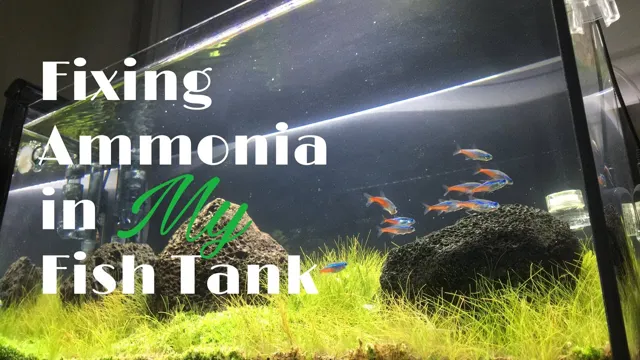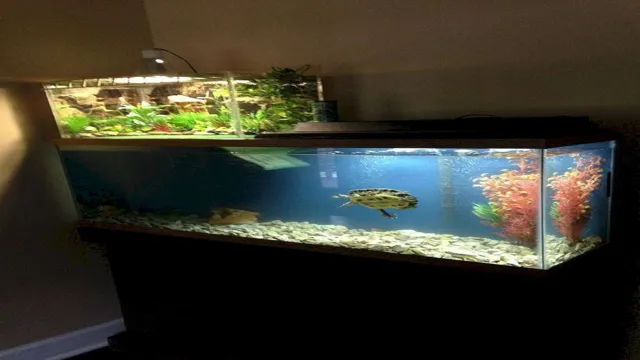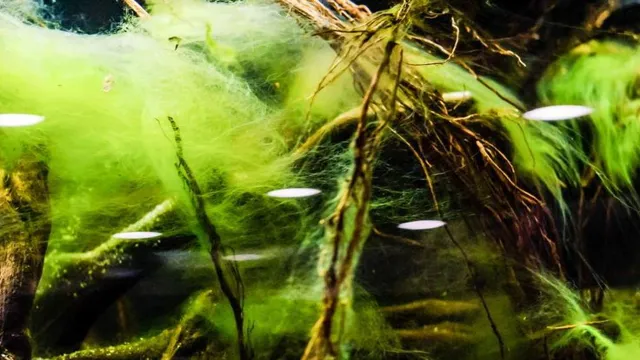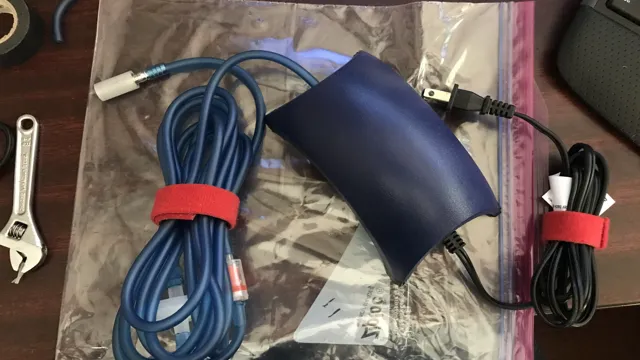Aquariums are a delightful addition to any space, adding a touch of nature to your home or office. However, owning an aquarium comes with its own set of challenges, one of them being keeping the water quality optimum for the aquatic inhabitants. One aspect of water quality is ammonia concentration.
Ammonia is a toxic compound that can be produced by fish waste, uneaten food, and decaying plant matter. If left unchecked, high levels of ammonia can harm your fish, causing illness and even death. But don’t worry, there are ways to lower ammonia levels in your aquarium and maintain a healthy environment for your aquatic pets.
In this article, we’ll cover some practical steps you can take to reduce ammonia buildup and ensure your fish thrive in their aquatic habitat. So, let’s dive in!
Understanding Ammonia in Your Aquarium
If your aquarium has high levels of ammonia, it can be harmful to your aquatic life. So, it’s essential to know how to lower the ammonia levels. One way is to conduct 25 to 50% water changes every other day until the ammonia levels go down.
You can also add aquarium salt to change the pH level, which reduces ammonia toxicity. Consider using a water conditioner that has chloramine and ammonia neutralizer, which helps remove the ammonia by turning it into a non-toxic form. Make sure your aquarium filter is working correctly and clean it frequently to increase the beneficial bacteria that break down ammonia.
Another tip is to avoid overfeeding your fishes, as the uneaten food may add to the ammonia levels. By following these steps, you can provide a safe and healthy environment for your aquatic pets.
The Harmful Effects of High Ammonia Levels
Ammonia Ammonia is a common compound found in aquariums, but it can pose a significant threat to aquatic life if not managed properly. When fish release waste, it breaks down into ammonia, which tends to accumulate in the water. High levels of ammonia can cause a toxic environment that leads to stress, illness, and even death in fish.
To prevent high ammonia levels, you should monitor the aquarium’s water quality regularly and maintain proper filtration systems. You can also add live plants to the aquarium, which can help reduce the amount of ammonia present in the water by absorbing it for their growth. It’s essential to understand the significance of ammonia levels in your aquarium to ensure a safe and healthy environment for your aquatic pets.

Identifying the Source of Ammonia
If you’re an aquarium owner, understanding the source of ammonia in your tank is crucial. Ammonia is a hazardous chemical that can be lethal to fish and other aquatic life, and its presence in your tank can be the cause of many issues. The most common source of ammonia in an aquarium is from the waste products produced by your aquatic pets.
Fish and invertebrates excrete ammonia in their urine and through their gills, making it unavoidable in your tank. However, other sources can contribute to the buildup of ammonia levels in your aquarium. These can include overfeeding your fish, overstocking your tank, or not doing frequent enough water changes.
Identifying the source of ammonia can be the first step in treating it and ensuring the health of your fish and other aquatic life. By regularly testing your water parameters and maintaining good aquarium hygiene, you can prevent and address ammonia buildup in your tank. (See Also: How to Make Coral Safe for Freshwater Aquarium: Tips and Tricks)
Methods for Lowering Ammonia in Your Aquarium
If you’re struggling with high levels of ammonia in your aquarium, fret not, as there are several methods you can use to bring it down. Firstly, ensure that you’re not overfeeding your fish as uneaten food can increase ammonia levels. Secondly, conduct regular water changes to dilute the ammonia levels and remove any debris or waste from the tank.
Additionally, you can add live plants to your aquarium as they absorb ammonia as part of their natural processes. Another method is to introduce beneficial bacteria into your tank, which will help to break down ammonia into less toxic substances. Finally, consider upgrading your filtration system to help remove excess ammonia.
By utilizing these methods, you’ll be able to maintain a healthy and vibrant aquarium, while keeping ammonia levels under control.
Performing Regular Water Changes
Performing regular water changes is one of the simplest methods for lowering ammonia in your aquarium. Ammonia is produced by fish waste and uneaten food, and high levels of ammonia can harm your fish and other aquatic creatures. To keep ammonia levels low, it’s important to change 10-20% of your aquarium water every 1-2 weeks.
This will dilute the ammonia and other pollutants in the water, keeping your fish healthy and happy. When performing a water change, make sure to use a water conditioner to remove any chlorine or other chemicals from tap water. You should also vacuum the substrate to remove any debris that could further contribute to ammonia levels.
By consistently performing water changes, you can maintain a healthy and thriving aquarium environment for your aquatic friends.
Adding Live Plants to Your Aquarium
If you are having trouble maintaining a healthy balance in your aquarium, one effective method is to add live plants. Live plants not only provide a natural aesthetic to your aquarium but also act as a natural filter by absorbing excess nutrients and converting carbon dioxide into oxygen. This means a lower amount of ammonia in your aquarium water, as well as increased oxygen levels for your fish to thrive.
Different types of plants require different amounts of light and nutrients, so it’s important to research which plants are suitable for your aquarium setup. Consider plants such as java fern, anubias, and amazon sword for beginner-friendly options that are easy to care for. Adding live plants to your aquarium not only improves the quality of your aquarium environment but also creates a beautiful and natural habitat for your fish to enjoy.
Using Ammonia-Removing Products
Ammonia-Removing Products One of the most common problems that aquarium owners face is the buildup of ammonia in their tanks. Ammonia is a natural byproduct of fish waste, uneaten food, and decomposing plant matter, and high levels of ammonia can be harmful (even fatal) to your fish. Luckily, there are plenty of ways to lower ammonia levels in your tank, and one effective method is using ammonia-removing products.
These products can come in the form of chemical additives or filter media, and they work by binding to ammonia molecules and removing them from the water. When choosing an ammonia-removing product, it’s important to read the label carefully and make sure that it’s compatible with your tank and the types of fish you have. Additionally, it’s crucial to monitor ammonia levels regularly and take steps to address any issues that arise to keep your fish happy and healthy. (See Also: How to Go to Aquarium: A Comprehensive Guide for an Unforgettable Experience)
Monitoring Ammonia Levels in Your Aquarium
Keeping track of ammonia levels in your aquarium is essential in ensuring your aquatic creatures thrive in a healthy habitat. High levels of ammonia can quickly become toxic, leading to illness and even death for your fish and other aquatic life. To get ammonia down in your aquarium, frequent water changes and adding beneficial bacteria can help break down excess ammonia levels.
Testing your water regularly and monitoring the levels will give you a better idea of when it’s time to change the water and add more bacteria. It’s important to maintain a consistent feeding schedule and not overfeed your fish, as excess food can lead to an increase in ammonia. By taking these steps, you can ensure a healthy and safe environment for your aquatic companions.
Testing Ammonia Levels Regularly
If you’re a fish-keeper, then monitoring the ammonia levels in your aquarium is crucial for the health of your fish. Ammonia is produced naturally by fish waste and decaying fish food, which can rapidly increase if left unchecked. High ammonia levels can cause stress, sickness, and even death for your fish.
Testing ammonia levels regularly is easy and can be done using a simple water testing kit. Aim for ammonia levels below 0.1 ppm, and if levels exceed this, then perform a water change and add an ammonia detoxifier.
Keep in mind that changes in water temperature and feeding habits can also affect ammonia levels. By staying vigilant and monitoring ammonia levels, you can ensure a healthy and thriving aquarium for your fish to call home.
Maintaining a Healthy and Balanced Aquarium
Maintaining a healthy and balanced aquarium is crucial to ensure the well-being of your aquatic pets. One of the most important components of monitoring your aquarium’s health is to regularly check the levels of ammonia. Ammonia is produced by fish waste and decomposing organic matter and can be toxic if present in high levels.
It’s recommended to check the levels of ammonia at least once a week using a test kit. If the levels are high, it’s essential to take action immediately, such as changing the water or adjusting the feeding schedule. Think of ammonia like the smoke detector in your home; even if you don’t see any visible signs of danger, it’s there, and you need to be vigilant for your pets’ safety.
Remember that keeping your aquarium healthy requires ongoing attention, but it’s a small price to pay for the joy and beauty of having a thriving aquatic ecosystem in your home.
Conclusion and Final Tips
In conclusion, bringing down ammonia levels in your aquarium can be a tricky business, but it’s not impossible. With some patience, diligence, and a bit of common sense, you can create a healthy and thriving aquatic environment that your fish will love. Just remember to test your water regularly, avoid overfeeding, and keep your filters clean.
And if all else fails, you can always try the old-fashioned method of whispering sweet nothings to your fish. Hey, it might not lower the ammonia levels, but at least you’ll have some new friends to talk to.” (See Also: How to Calculate Actual Water in Aquarium: A Comprehensive Guide)
FAQs
What causes high ammonia levels in an aquarium?
High ammonia levels in an aquarium can be caused by overfeeding, overstocking, inadequate filtration, and lack of water changes.
How can I test for ammonia levels in my aquarium?
You can test ammonia levels in your aquarium using a test kit specifically designed for ammonia testing.
How often should I test for ammonia levels in my aquarium?
It’s recommended to test for ammonia levels in your aquarium at least once a week, or more frequently if you have a new or heavily stocked tank.
What can I do to lower ammonia levels in my aquarium?
To lower ammonia levels in your aquarium, you should perform partial water changes, remove any uneaten food or debris, and consider adding a biological filter supplement.
Can high ammonia levels harm my fish?
Yes, high ammonia levels can harm or even kill your fish, as it can cause stress and damage to their gills and other organs.
How long does it take for ammonia levels to decrease in an aquarium?
The time it takes for ammonia levels to decrease depends on the severity of the issue and the steps taken to address it. It could take a few days to a couple of weeks or more.
How can I prevent high ammonia levels in my aquarium?
To prevent high ammonia levels in your aquarium, you should avoid overfeeding and overstocking, perform regular water changes, and ensure adequate filtration for your tank’s size and inhabitants.






